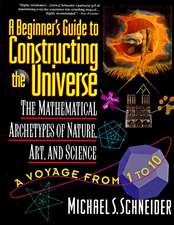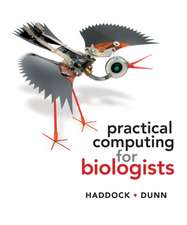Mathematical Structures in Population Genetics: Biomathematics, cartea 22
Autor Yuri I. Lyubich Editat de Ethan Akin Traducere de D. Vulis, A. Karpoven Limba Engleză Paperback – 14 dec 2011
Din seria Biomathematics
-
 Preț: 395.09 lei
Preț: 395.09 lei -
 Preț: 385.62 lei
Preț: 385.62 lei -
 Preț: 395.63 lei
Preț: 395.63 lei -
 Preț: 384.48 lei
Preț: 384.48 lei -
 Preț: 398.15 lei
Preț: 398.15 lei -
 Preț: 391.40 lei
Preț: 391.40 lei -
 Preț: 391.02 lei
Preț: 391.02 lei -
 Preț: 402.38 lei
Preț: 402.38 lei -
 Preț: 404.67 lei
Preț: 404.67 lei -
 Preț: 394.51 lei
Preț: 394.51 lei - 15%
 Preț: 704.04 lei
Preț: 704.04 lei -
 Preț: 386.22 lei
Preț: 386.22 lei - 15%
 Preț: 654.43 lei
Preț: 654.43 lei -
 Preț: 390.25 lei
Preț: 390.25 lei -
 Preț: 390.63 lei
Preț: 390.63 lei -
 Preț: 405.06 lei
Preț: 405.06 lei -
 Preț: 398.74 lei
Preț: 398.74 lei - 15%
 Preț: 596.46 lei
Preț: 596.46 lei
Preț: 504.02 lei
Preț vechi: 592.97 lei
-15% Nou
Puncte Express: 756
Preț estimativ în valută:
96.44€ • 100.70$ • 79.64£
96.44€ • 100.70$ • 79.64£
Carte tipărită la comandă
Livrare economică 15-29 aprilie
Preluare comenzi: 021 569.72.76
Specificații
ISBN-13: 9783642762130
ISBN-10: 3642762131
Pagini: 392
Ilustrații: X, 373 p.
Dimensiuni: 155 x 235 x 21 mm
Greutate: 0.55 kg
Ediția:Softcover reprint of the original 1st ed. 1992
Editura: Springer Berlin, Heidelberg
Colecția Springer
Seria Biomathematics
Locul publicării:Berlin, Heidelberg, Germany
ISBN-10: 3642762131
Pagini: 392
Ilustrații: X, 373 p.
Dimensiuni: 155 x 235 x 21 mm
Greutate: 0.55 kg
Ediția:Softcover reprint of the original 1st ed. 1992
Editura: Springer Berlin, Heidelberg
Colecția Springer
Seria Biomathematics
Locul publicării:Berlin, Heidelberg, Germany
Public țintă
ResearchCuprins
1 Introduction to Population Dynamics.- 1.1 Elements of Classical Genetics.- 1.2 General Evolutionary Equations.- 1.3 Two-level Populations.- 2 Elementary Models.- 2.1 The Free Single Locus Population.- 2.2 The Free Two Locus, Two Allele Population.- 2.3 The Dynamic Effects of Sex Linkage.- 2.4 Selection at a Two Allele, Autosomal Locus.- 2.5 Mutation.- 2.6 Appendix: Asymptotic Estimates in One-Dimensional Dynamics.- 3 Algebra Foundations.- 3.1 Nonassociative Algebras. Idempotents and Nilpotents.- 3.2 Nilalgebras.- 3.3 Bark Algebras and Spaces.- 3.4 Bernstein Algebras.- 3.5 Genetic Algebras and Train Algebras.- 3.6 Duplication of an Algebra.- 3.7 Stochastic Spaces.- 3.8 Stochastic Algebras.- 3.9 The Kin of an Evolutionary Algebra. Normalization.- 4 Stationary Gene Structure.- 4.1 Statement of Problem. Examples.- 4.2 Zygote Genotypes. Principle of Gene Inheritance.- 4.3 Elementary Gene Structure (E.G S).- 4.4 Nonnegativity for an Arbitrary S.G.S..- 4.5 Genetic Criterion for E.G S.- 4.6 Nonelementary S.G.S..- 5 The General Bernstein Problem.- 5.1 The Necessity of Mendel’s First Law.- 5.2 Theorem on Constant Inheritance.- 5.3 The Nonnegative Projection Associated with an Isolated Idempotent.- 5.4 A Theorem on Two Non-Splitting Types.- 5.5 The Solution of the Bernstein Problem for Exceptional Populations.- 5.6 Small Dimensions.- 5.7 Estimate of the Number of Constant Subpopulations. Ultranormal Bernstein Populations.- 5.8 Appendix. The Proof of Topological Lemma 5.7.2.- 6 Recombination Processes.- 6.1 Linkage Distribution. Chromosome Structures.- 6.2 Evolutionary Equations. Reiersöl Algebra.- 6.3 Structure of the Set of Equilibrium States. Convergence to Equilibrium.- 6.4 Exact Linearization. Evolutionary Spectrum.- 6.5 Explicit Evolutionary Formula.- 6.6 The Rate ofConvergence to Equilibrium.- 6.7 Combining Recombination and Mutation.- 6.8 Appendix. Recombination Among Sex Chromosomes.- 7 Evolution in Genetic Algebras.- 7.1 Reiersöl Algebras are Genetic.- 7.2 Idempotents. Convergence of Trajectories.- 7.3 Exact Linearization. Evolutionary Spectrum.- 7.4 The Explicit Evolutionary Formula.- 8 General Quadratic Evolutionary Operators.- 8.1 The Set of Equilibrium States.- 8.2 Contracting Quadratic Operators.- 8.3 An Example of Irregular Trajectory Behavior.- 9 Selection Dynamics.- 9.1 Evolutionary Selection Equations for an Autosomal Multiallele Locus.- 9.2 Stability of Equilibrium States. Fundamental Theorem.- 9.3 Variance Estimates of Disequilibrium.- 9.4 Convergence to Equilibrium for Selection in an Autosomal Multiallele Locus.- 9.5 Evolutionary Selection Equations in a System of Autosomal Multiallele Loci.- 9.6 Convergence to Equilibrium under Additive Selection for a System of Autosomal Multiallele Loci.- 9.7 Appendix. Characterization of Additive Selection.- A Commentaries and References.











